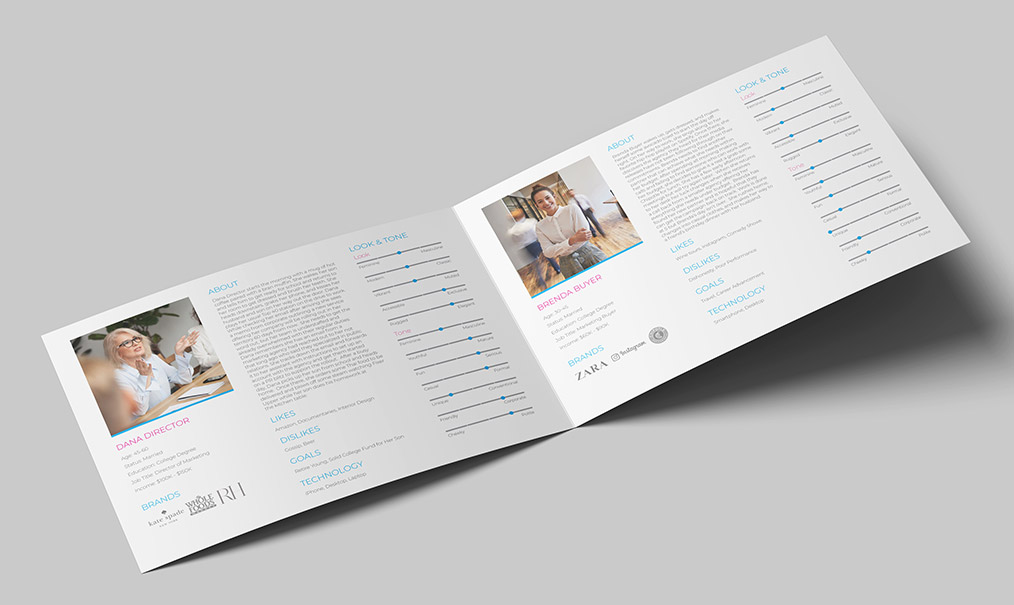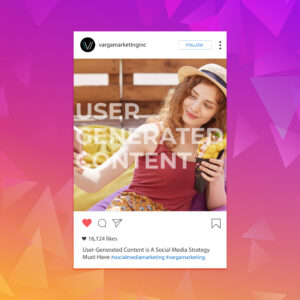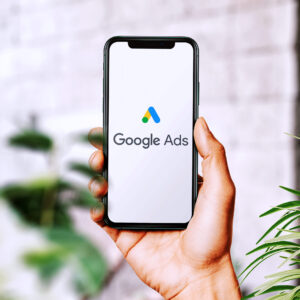Who are you creating your content for? Don’t fall into the trap of creating content focused solely on highlighting how great your product or service is. While necessary, this only serves to feed your ego rather than answer the questions your audience may actually have. The result is that this kind of content won’t get the results you’re hoping for.
Your content needs to be customer-centric to succeed.
Marketing and advertising aren’t just about explaining why your product or service is wonderful. It’s about understanding the customers’ needs, meeting them where they are, and explaining how you can solve a problem or provide a want that they have.
You’ve got to craft content that says, “We see you, we get you, and we are here to provide.”
Here’s how to create content that is focused on meeting your customer’s wants and needs and why you need to be conscious about putting your audience first.
Producing content that focuses on your customer is going to improve their experience and satisfaction with your brand. This is because you are creating content that empathizes with them by directly addressing their wants, needs, and pain points, before providing a viable solution in the form of your services or products.
People are more likely to feel a sense of trust in a brand that seeks to understand what they like and what solutions they are looking for.

Creating customer-first content makes it more likely that the content will hit home with your target audience. This increases the chance that your customer finds the solution they need while you get the desired result in their click, call, subscription, or purchase.
For those looking to craft content that is truly customer-focused, we have a list of tips you can follow:

To write for your customers, you need to figure out who they are to begin with. This is when buyer personas or ideal customer personas come into play.
There are two ways to do this. If you have been getting customers over the years and have some data about them, gather it up and segment it into a few different profiles. The more data you have for this approach the better. You can include age ranges, genders, locations, average spend, and even common likes and dislikes.
The other method is to create an ideal customer profile. This is more for when you don’t have a lot of data on your customers, but you can brainstorm the types of customers you believe would be the most interested in your products or services. While more conceptual in nature, these types of personas can give you a starting point to build on. For these profiles, it helps to put yourself in these individuals’ shoes, focusing on what problem they are trying to address when they go on the hunt for the information, product, or service you’re offering.
In both cases, make sure you focus on the customers’ wants, needs, and pain points. They aren’t looking for your business specifically! However, you can ensure that they find your business as a solution to their needs when you start trying to think the way they think.
The more information you have on your audience the better off you’ll be.
Don’t be afraid to ask questions! People love to talk about their thoughts, feelings, wants, and needs. If you are trying to get into the head of your customer, look at some different ways to ask them about themselves. You can use email surveys, social media polls, comments sections, and more.
Use this information to determine common pain points that your customers are facing that you can help solve. These are the things that your content needs to address.
Plus, this is a great way to get user-generated content!


You should be publishing content where your target audience spends their time.
For example, if your customers spend most of their time hunting for products on social media, you may want to produce more content on Facebook, Instagram, or Pinterest to help them find your product. Plus, these channels provide ecommerce tools that make purchasing easy—a perk both you and your customers will enjoy.
While you can always expand where you distribute content, it is best to focus primarily on the channels where most of your customer base spends their time. Remember, the goal is to meet your buyers where they are rather than expecting them to come to you.
People are (understandably) suspicious of businesses and brands that sell, well, anything really. We all have that in common. That’s why building trust is so very important.
A good brand identity can help you establish a trustworthy relationship with your customers. The better your branding efforts, the easier it will be to produce content that matches your brand identity and voice.
With consistency comes trust. Your customers and followers will know what to expect from you. If your products and services are good quality and on-brand, that trust becomes even better cemented.


Don’t just talk about the best details of your product or service. You need to show how those perks provide real benefits and solutions for your customers.
If Brand ABC has a new product they are releasing and their content highlights all of its best features without considering what they offer their customer base, they aren’t likely to get a big response. This kind of content feeds their ego rather than speaking to the customer.
They need to focus on what pain points their product helps solve, instead of just the flashy details they feel the most proud of. It can help to match a benefit or solution to each key detail of the product they are selling. For example:
- “Save time and curb stress on your morning commute by downloading our app, now with real-time traffic reporting.”
- “Make your morning routine easier with our new line of clothing. You shouldn’t have to choose between comfort and class and with [Brand ABCs] new comfy-chic clothing line, you won’t have to.”
- “Tired of the same boring meals? Need to stick to a budget? Our new meal kits are here to make dinnertime fun again. With easy-to-follow instructions and the ability to customize kits according to your budget, you can enjoy a satisfying meal without breaking the bank or wasting food.”
You can’t just talk about why the product or service you offer is great. Explain how your product meets your customers’ needs and what benefits they’ll get from it.
One size literally never fits all. It takes one shopping trip to make that clear. Your content strategy shouldn’t be a one-size-fits-all ordeal either.
While it is advisable to make the most of the content you produce, segmenting and diversifying it according to different customer groups can help that content be better personalized and, therefore, more customer-focused.
To segment your content, you will want to categorize it according to the different types of customers that you are trying to market to and where they are in the customer journey. You may create content for someone who is just learning about your business and trying to determine if they should work with you. Another type of content may be geared to help encourage someone else to take the leap and make a purchase because they like what you have to offer and just needs to hit “Buy!” Yet another type of content can be focused on keeping customers who have already made a purchase engaged so that they easily remember you and come back to purchase from you again.

Segmentation makes it easier for you create content that makes your audience feel understood, answers their questions, and helps guide them to the next step that is best for them (and hopefully you too!)
There is a lot you have to offer, we get it! However, your brand voice shouldn’t just be used for selling.
While you don’t need to be besties with your customers, you do want to engage with them in a way that isn’t focused solely on purchases. Creating content that is engaging without trying to sell something helps to humanize your brand, establish your identity, and make you memorable so that they will come back to you in the future.
Plus, it can be fun.
Sharing silly posts, creating fun videos, collecting suggestions for fun dad jokes, taking a poll on the proper way to eat string cheese, and other ideas are all great ways to engage with your audience in a more human way.
We’ll be honest here: doing this also helps you to better understand your buyers and makes creating customer-centric content easier too.
Creating content that resonates with your audience and promotes your products and services effectively can be tricky. It never hurts to ask for help!
Varga, Inc can help make your marketing and content strategy simple. We keep it straightforward, fun, and effective. Reach out to us today to learn more.









